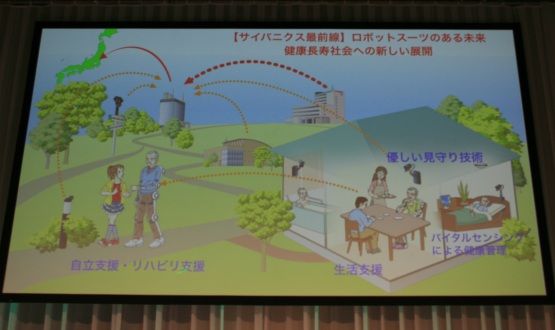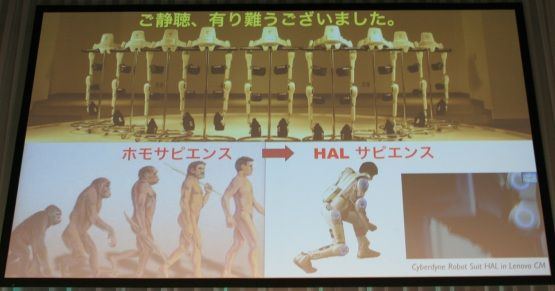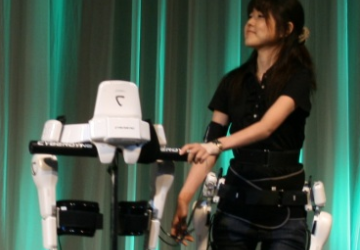Only in Japan. You turn up to an Intel keynote presentation expecting to hear the processor giant talking shop, perhaps showing off the odd device packing one of its chips. What you don't expect is to see a "first of its kind" robot system called HAL given a run, literally, on stage.
Yes, HAL. Have these guys not seen 2001: A Space Odyssey? And it gets worse - the company behind the robot is Cyberdyne...
HAL is a set of robot legs that is driven by advances in neuro-nerve technology. And it's all powered by an Intel computer. You see the link now, right?
Whatever the reason for president and CEO of Cyberdyne Yoshiyuki Sankai's demo, we're glad we bore witness to the spectacle.
And not because the technology on board isn't mind blowing and the possibilities for the medical profession aren't startling, because clearly they are, but because the PowerPoint display that Sankai used included some slides of unintentional brilliance.
How about this one of an old man whose dinnertime worries are solved with an assisted walk?

Or how's about Cyberdyne's take on the history of human evolution?

Awesome, we're sure you'll agree.
In all seriousness, HAL demonstrates the innovation in robotics that the Japanese are renowned for. It uses sensors to monitor neuro activity and not only allows its wearer to control body movements using signals of intent, it also monitors the user's health status by measuring things such as the density of blood in the brain and checking for abnormal neuro activity.
"When a person attempts to move, nerve signals are sent from the brain to the muscles via moto neuron, moving the musculoskeletal system as a consequence," explains the company on its website.
"At this moment, very weak biosignals can be detected on the surface of the skin. HAL catches these signals through a sensor attached on the skin of the wearer.
"Based on the signals obtained, the power unit is controlled to move the joint unitedly with the wearer's muscle movement, enabling to support the wearer's daily activities."
The CEATEC audience were shown an example of a stroke patient who, within 1 day of brain surgery, was wired up to HAL for rehabilitation. Within 2 days the patient was able to stand, assisted by the robot, and within 5 days she was walking with HAL's help. After 2 months, HAL's work was done and she was able to walk unassisted.
"Using human signals it is possible to operate robots," explained Sankai. "The robot can be controlled by human will."
It's not just the medical field that stands to benefit from HAL and other "robot suits for the future". There's also possibilities in the heavy lifting and labour field, as well as opportunities to evolve gameplay for the next-generation of consoles.
We just hope that nobody at the Cyberdyne labs is testing HAL variants out on first person shooter titles. We don't want to give the robots any ideas.

